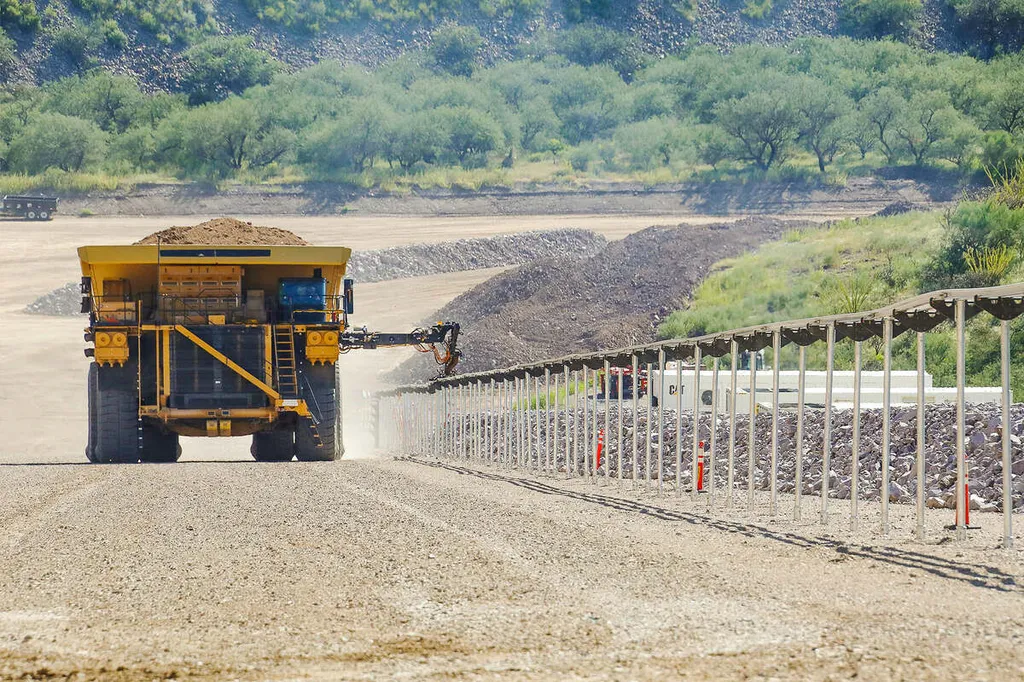Chile’s state-owned copper giant Codelco is set to pilot Caterpillar’s innovative Dynamic Energy Transfer (DET) system, a move that could significantly reshape the mining industry’s approach to emissions reduction and operational efficiency. The trial, scheduled to commence in the second quarter of 2026 at Codelco’s Radomiro Tomic Division in northern Chile, will deploy the DET system on three Cat 798 AC diesel-electric haul trucks. This initiative marks a critical step in the sector’s transition towards more sustainable and technologically advanced mining practices.
The DET system, which supplies electricity to trucks while in motion, promises to cut emissions by a substantial 60%–70%, extend engine life, and reduce fuel consumption. This technology operates by transmitting electricity through an electrified rail system connected to a power transfer module, which converts energy from the site’s grid to the required voltage. A machine-connection system then feeds the power directly into the truck’s drivetrain. Notably, the system is compatible with both diesel-electric and future battery-electric trucks, offering a flexible solution for mining operations.
Felipe Lagno, Codelco’s corporate manager of innovation and technology, emphasized the significance of this trial. “We are steadily advancing toward the mining of the future,” he stated. “We have the opportunity to reduce our environmental impact and extend the useful life of our trucks without compromising productivity.” This sentiment underscores the dual focus of the project: enhancing sustainability while maintaining operational efficiency.
The one-year trial will involve installing electrified rails along a ramp in open-pit operations. Finning SA, Caterpillar’s dealer, will support the project by handling installation and maintenance. Marc Cameron, Caterpillar’s senior vice-president, highlighted the collaborative aspect of the project, noting that it will help refine DET’s design by incorporating customer feedback. Finning president Juan Pablo Amar called the project a milestone in advancing sustainable mining practices.
This initiative is part of Codelco’s broader roadmap to decarbonize operations by electrifying its fleet and partnering with equipment makers, research centers, and universities on low-carbon technologies. The trial of the Cat DET system represents a tangible step towards achieving these goals, demonstrating the company’s commitment to innovation and sustainability.
The potential implications of this trial extend beyond Codelco and Caterpillar. If successful, the DET system could set a new standard for emissions reduction and operational efficiency in the mining industry. It may also accelerate the adoption of similar technologies by other mining companies, fostering a broader shift towards electrification and sustainability.
Moreover, the trial highlights the importance of collaboration between mining companies and technology providers. By working together, they can develop and refine technologies that address the unique challenges of the mining sector. This collaborative approach could lead to more innovative solutions and faster adoption of new technologies, ultimately benefiting the entire industry.
In the broader context, the trial of the DET system aligns with global trends towards decarbonization and sustainability. As governments and industries worldwide strive to reduce their carbon footprints, the mining sector is under increasing pressure to adopt cleaner technologies. The success of this trial could serve as a model for other industries, demonstrating the feasibility and benefits of electrification and emissions reduction.
However, challenges remain. The trial’s success will depend on the seamless integration of the DET system into existing operations, the reliability of the technology, and the ability to maintain productivity levels. Additionally, the long-term viability of the system will hinge on its cost-effectiveness and scalability.
In conclusion, Codelco’s trial of Caterpillar’s DET system is a significant development in the mining industry’s journey towards sustainability and operational efficiency. The potential benefits of this technology are substantial, and its success could have far-reaching implications for the sector. As the trial progresses, it will be crucial to monitor its outcomes and assess its potential for broader adoption. The mining industry stands at a crossroads, and initiatives like this one could shape its future trajectory.

